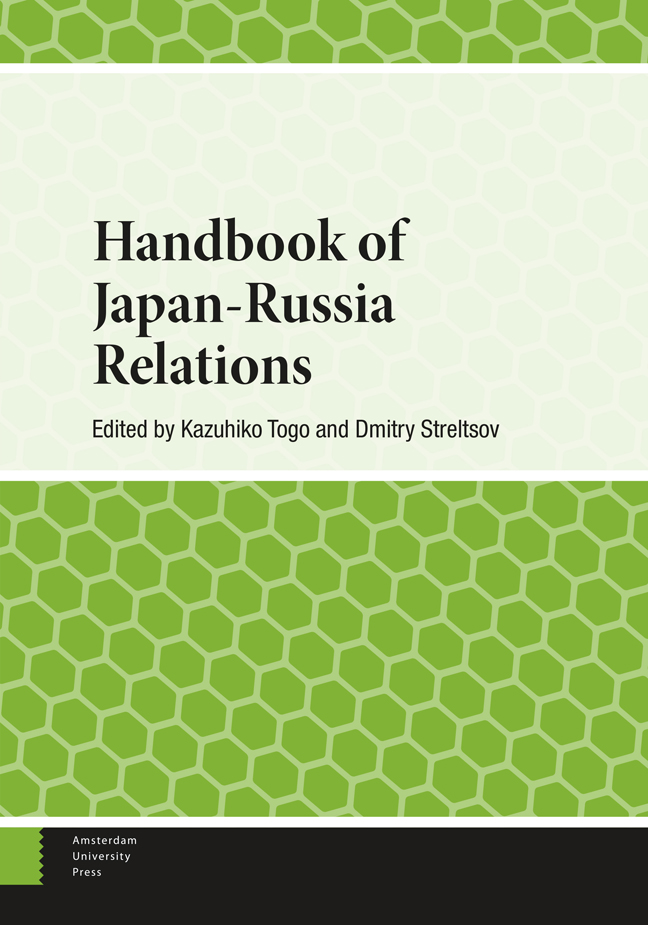Book contents
- Frontmatter
- Contents
- Dedication
- Acknowledgements
- Contributors
- Abbreviations
- Introduction
- Part 1 War and Peace: Diplomatic Relations and Security
- Part 2 Territory
- Part 3 The Economy and Energy
- Part 4 Disaster Cooperation
- Part 5 Culture
- Part 6 Perceptions of the Other
- Appendix 1 1956 Joint Declaration
- Appendix 2 Tokyo Declaration (1993)
- Appendix 3 Moscow Declaration (1998)
- Appendix 4 Irkutsk Statement (2001)
- Appendix 5 Foreign Ministry Statement (2022)
- Index
15 - Russian Perceptions of Japan
Published online by Cambridge University Press: 26 March 2024
- Frontmatter
- Contents
- Dedication
- Acknowledgements
- Contributors
- Abbreviations
- Introduction
- Part 1 War and Peace: Diplomatic Relations and Security
- Part 2 Territory
- Part 3 The Economy and Energy
- Part 4 Disaster Cooperation
- Part 5 Culture
- Part 6 Perceptions of the Other
- Appendix 1 1956 Joint Declaration
- Appendix 2 Tokyo Declaration (1993)
- Appendix 3 Moscow Declaration (1998)
- Appendix 4 Irkutsk Statement (2001)
- Appendix 5 Foreign Ministry Statement (2022)
- Index
Summary
This chapter, based on the difference in the perception of others in the concepts of polemos and agon, describes the images of the Japanese in the Russian public consciousness. The study begins with Captain Vasily Golovnin’s memories of Japan in the early 19th century and ends with the reception of Japanese Zen by today’s youth. The conflicting history of relations between the two countries over the past two centuries has nonetheless been expressed in a competitive but generally favorable and tolerant perception of Japan in Russia. The authors conclude that the image of Japan in the minds and mentality of Russian citizens is formed according to the agonistic type, which implies the acceptance of the other, and not rejection, as is the case of the “perception of the other” according to the polemos type.
Introduction
Cross-cultural analysis is one of the essential elements of the changed paradigm of thinking of modern man. It introduces a new dimension into the study of the problem of international communications, connected with the interaction of cultures, when any new state in any field of human activity can be read as a text, the semantic content of which loses its certainty, is blurred and appears for the person in an unexpected form. The multitude of possible interpretations turns any appeal to the emerging phenomenon into a problem, and often into an event. The manipulative technique of modern mass media, although it tries to impose certain stereotypes of perception, encounters a situation of resistance and is forced to take into account the moment of interpretation by the recipient of the received message. In this regard, television and the Internet have their own methods of forming a space for communication of intercultural interaction. These communication flows are embedded in the international politics of relations, sometimes obeying the political conjuncture of the moment, sometimes stimulating a favorable vector of emerging political relations. For all the importance of modern means of communications, they must still pay tribute to the steady trend of peoples’ perception of each other, which is in one way or another connected with the tradition of relations, with historical memory and the mutual politics of memory. In recent decades, politics of memory has become an active factor of substantiation and evidence in international affairs, sometimes obscuring the significance of practical issues. Peoples communicate, putting forward, along with political or economic demands, cognitive-psychological interpretations.
- Type
- Chapter
- Information
- Handbook of Japan-Russia Relations , pp. 271 - 291Publisher: Amsterdam University PressPrint publication year: 2024

